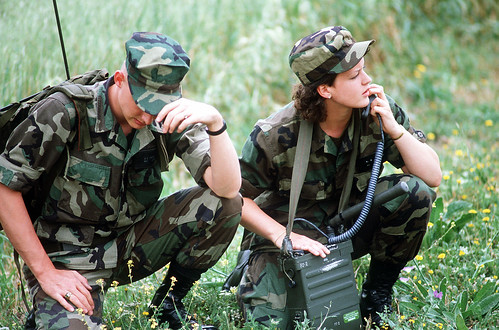Don’t Ask, Don’t Tell: Sexual Addiction in the Military

The links between the rise in Military Sexual Assaults (MSAs), Sexual Addiction, and the factors therein are explored.
It has been over a year since the the first of Gen. Jeffrey Sinclair’s victims came forward about her harrowing abuse. The disturbing details of forcible sodomy and death threats during the Sinclair case had the whole nation looking deeper into the military’s dirty laundry. However, this story, like so many others, has been lost to the ephemerality of social media. As much as the voices of these women and men are silenced, the data on military Sexual Assaults (MSAs) speaks volumes.
Harrowing Statistics
According to the Sexual Assault Prevention and Response Office (SAPRO), 3,192 MSAs were documented during their annual September report (2011). Furthermore, SAPRO estimates that only 14% of rape cases are reported, putting the actual number of MSAs close to 19,000. One major reason for this discrepancy may be due to the fact that, although women have the overwhelming majority with 88% of documented claims, evidence suggests that many male victims may be too ashamed to come forward. SAPRO also speculates that the biggest factor of the mismatching data is that most assaults occur from a direct superior. Proper military procedure requires the accusing officer’s direct superior to investigate the rape, putting victims in an impossible situation for seeking justice.
MSAs as Indicators of Sexual Addiction
Strong correlations have been drawn between the rise of MSAs and sexual addiction. Sexual addiction, unlike additions to drugs and alcohol, is what is known as a process addiction, meaning that a person is addicted to a type of behavior (or “process”) rather than a substance. Process addictions are every bit as powerful as addiction to drugs and alcohol, manipulating the same neurochemical reward-gratification systems in the brain. The sole difference between the two is that with process addictions, no substance is ingested.
Brain scans performed on sex addicts by expert medical professionals revealed that the same areas of the brain experience an increase in activity as a cocaine addict does while high. When viewing pornography, a porn addict experiences an adrenaline rush; the individual’s heart rate accelerates, blood vessels constrict, hands get clammy, and the eyes dilate. Endorphins released by the pituitary gland and hypothalamus amp production of dopamine, opening the pleasure centers of the brain. Much like cocaine usage, the sex addict requires more and more dopamine in order to get high. However, in the case of sexual addiction, an increase in dosage is an acceleration of sexual aggression. For the sex addict, the leap from viewing, to masturbation, to sexual assault and rape is not more than the leap from one ounce of cocaine to two.
Pornography
Author and sex addiction expert Paula Hall argues that, while the exact causes of sexual addiction are complex, pornography plays a bigger role that we may think. In her book, Understanding and Treating Sex Addiction, she explains that easy availability of porn gives people in high-stress jobs a way of dealing with their pressurised lifestyle. "We're seeing more soldiers who've done tours in Afghanistan and have used internet porn as a means of escape," says Hall. "As with alcohol, using porn to soothe the pressures of life isn't bad in itself – unless and until it becomes addictive, and is the only way you can escape from your problems."
The jury is in: it has become a huge problem. More and more US military therapists and chaplains are reporting pornography use among personnel, skyrocketing abuse statistics up to 20% versus the national average of 1 in 10. The Department of Defense reports that females account for 14.5% of the armed forces personnel, and of these 207,308 service women, 1 in 3 will be sexually assaulted – a statistic that is twice the national average.
The Male Mystique in the Military
The stress of being a soldier – the same stress that causes men to seek pornagrapghy as a means of escape – is no excuse for the atrocities committed against their female counterparts, but the long sordid history of masculine ideology in the armed forces may be breeding sex addicts:
“In order to produce warriors, the military creates a version of the master/slave dynamic between subordinates and their superiors, thus giving commanders almost unlimited authority over the people they supervise and train…The military must teach people how to overcome barriers that prevent civilians from engaging in violence. And, military culture is masculine and hierarchical, emphasizing power, dominance and subordination. When you combine these dynamics, you get rape.” —Aaron Belkin, author of Bring Me Men: Military Masculinity and the Benign Facade on American Empire 1898-2001.
Although women have been allowed to serve this country in combat since the 1950’s, the post-Vietnam era has seen the greatest influx of female enlistments. Scientists are only now beginning to understand the complex male-female dynamic in the armed forces. One thing is clear: the masculine “ideal” can no longer stand.

